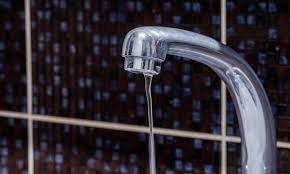Low water pressure in the house is a common problem that can be caused by numerous factors. It can make showers, laundry, and other household tasks difficult to complete. Fortunately, there are several steps you can take to identify and prevent low water pressure.
Common causes of low water pressure include clogged pipes, leaky fixtures, faulty plumbing systems, and lack of maintenance. Understanding these issues can help homeowners determine what needs to be done to restore adequate water pressure in their homes.
Additionally, regular maintenance on your plumbing system is essential for ensuring that it runs properly and efficiently all year round.
Click here if you’d like to learn how you can deal with your home’s water pressure problems if you have a well.
Overview of low pressure in houses
Low water pressure in a house can be a problem. It means that it takes longer to get enough water to do things like wash dishes or take showers. Low pressure can be caused by pipes that are too small, leaks in the plumbing, or not enough water being supplied to the house from the city.
Causes of low water pressure
Here are a few examples of things that can cause low water pressure in modern homes:
Clogged pipes
Clogged pipes can cause low water pressure in a house. This happens when something is blocking the pipe and making it so that only a little bit of water can get through. This means there will be less water coming out of the faucet which makes tasks like washing dishes or taking a shower take much longer.
Leaky plumbing fixtures
Leaky fixtures can make it so there is not enough water pressure in your house. This is because when there are leaks, the water gets out of the pipes before it can get to where you need it. Then, when you turn on the faucet, there is not enough water coming out, which affects your ability to take care of day to day tasks.
Faulty plumbing systems
Faulty plumbing systems are another cause of low water pressure in a house. This means that there is not enough water coming out of the taps or faucets when you turn them on. If your residential plumbing systems are broken or not working correctly, then it can be harder for the water to get where it needs to go, which affects how much water pressure you will have in your home.
Lack of maintenance
Not taking care of your plumbing can lead to low water pressure in your house. This happens when pipes start to get blocked from things like dirt and debris, which can stop the water from flowing smoothly. If this happens, it makes it harder for the water to reach all the taps in your house and you won’t have enough pressure coming out.
Identifying the problem and solutions to resolve your water pressure problems
Here are five simple things that you can do identify and deal with the cause of your water pressure issues:
1. Inspect all pipes and fixtures in the house to look for leaks and blockages. Homeowners should be on the lookout for signs of corrosion, oxidation, and mineral build-up, which are common causes of limited water flow. Additionally, any loose fittings or fittings that show signs of wear should also be checked and replaced if necessary.
2. Clean the aerators on faucets every now and then to remove sediment buildup, which can impede the flow of water from taps. Homeowners should unscrew the aerators from their faucets and clean them with a brush or cloth before replacing them.
3. Check the pressure regulator on the main incoming line to ensure it is not malfunctioning or set too low. If this is found to be an issue, a professional plumber may need to adjust or replace it accordingly.
4. Install pressure boosting equipment such as an accumulator tank, pressure booster pump, or an inline valve onto your plumbing system if needed. These devices will help increase water flow around your home when used properly according to manufacturer instructions.
5. Make sure there is enough water supply coming into the home from your local municipality or well source by conducting regular check-ups of your water meter readings. If you notice that there is not enough water being supplied at certain times of day or week, contact your local provider so they can investigate further and make adjustments as necessary.
Causes of low pressure in the house — Conclusion
In conclusion, low pressure in a house can be caused by many things. If you find yourself dealing with this problem, make sure to check all of these possible causes before calling a professional plumber for help. With some basic troubleshooting and understanding of how plumbing works, you may just save yourself time and money on unnecessary repairs!

